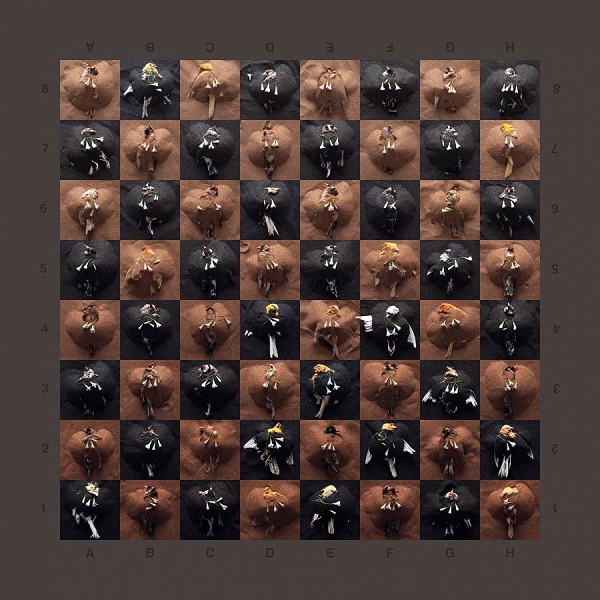ST_ Marcel Duchamp, who was a French painter, chess player, and writer said once:“I’ve come to the personal conclusion that while all artists are not chess players, all chess players are artists.”
Our artist today is not a chess player nor a French painter, despite the fact that he holds a diploma from École NationaleSupérieure des Arts Décoratifs, Paris, France 1987; but is surely a prominent artist.
Yet Nassouh Zaghlouleh played well in his latest “chess game”, his exhibition currently held in George Kamel Gallery in Damascus, consisting of 18 chessboard images, marked by death, as much as celebrating its absence.
The beauty of a chess move lies not in its appearance but in the thought behind it .That’s what made the Nassouh Zaghlouleh exhibition unique, dealing on the surface with trivial things, yet touching on very crucial concepts.
Those chessboard images document the heavy presence of death through observing the continual death of the artist’s birds throughout the war on Syria. In a realistic representation of real chess famous openings, Nassouh Zaghlouleh made of the killed birds pawns on chess boards, which are the most numerous pieces in the game of chess and, in most circumstances, the weakest, historically representing soldiers or infantry.
 Zaghlouleh with high expressionism and uniqueness, puts dead small birds in confrontation with “dushka shots”, in other chess boards birds were replaced by children’s shoes stained with blood.Ironically, in one of the chessboard images the Hamra Tawila cigarette packets are opponents to the dead canaries.
Zaghlouleh with high expressionism and uniqueness, puts dead small birds in confrontation with “dushka shots”, in other chess boards birds were replaced by children’s shoes stained with blood.Ironically, in one of the chessboard images the Hamra Tawila cigarette packets are opponents to the dead canaries.
The 18 chessboards’ images take into account the accurate aesthetics of composition, distributing the elements of each board on the sixty-four squares, each including a unique chess piece depicting: dead birds, children’s shoes, cigarette packets, blank bullets. Each picture in each square is unique and has been shot in full frame with high resolution, and has been gathered through collage techniques on Photoshop.
However, war has completely changed the game rules. Playing tactics, skilful moves, complex mental calculations, anticipating the opponent’s movements, and building a strategy to win the game, become insignificant in front of depicting the eloquence of death. Zaghlouleh depicting war, death and pain; fills sometimes all the chessboard squares with pictures of dead birds in different stages of decaying or burying to cover the entire chessboard; whereas in others he randomly places pictures with blood stains signifying the absurdity of war.
With a little scrutiny, we can notice that all pictures are placed on a yellowish or black sand background, which make the black and white squares of a chessboard. Zaghlouleh explained that “the sand is a metaphor of sea which usually opens new horizons whereas it has played in the war passageway to death.
 It is noteworthy that Zaghlouleh is also a prominent educator in visual art, graphic design and photography. He has held several academic positions: Dean of the Faculty of Arts at the Arab International University from 2017 until the date, and head of the Visual Communication Department at the same university 2010-2017. He was a lecturer in photography at the International Institute of Sound and Image 3IS, Paris, France 2003-2008; and lecturer in photography and art at the Faculty of Fine Arts, Damascus University, Syria 1983.
It is noteworthy that Zaghlouleh is also a prominent educator in visual art, graphic design and photography. He has held several academic positions: Dean of the Faculty of Arts at the Arab International University from 2017 until the date, and head of the Visual Communication Department at the same university 2010-2017. He was a lecturer in photography at the International Institute of Sound and Image 3IS, Paris, France 2003-2008; and lecturer in photography and art at the Faculty of Fine Arts, Damascus University, Syria 1983.
Zaghlouleh in his last expo has ceased to be a chess piece, and has become a chess player, performing life and war like a game of chess. To win you have to make a move. Knowing which move to make comes with insight and knowledge, and by learning the lessons that are accumulated along the way. We become each and every piece within the game of war.
Interview: Lama Alhassanieh


